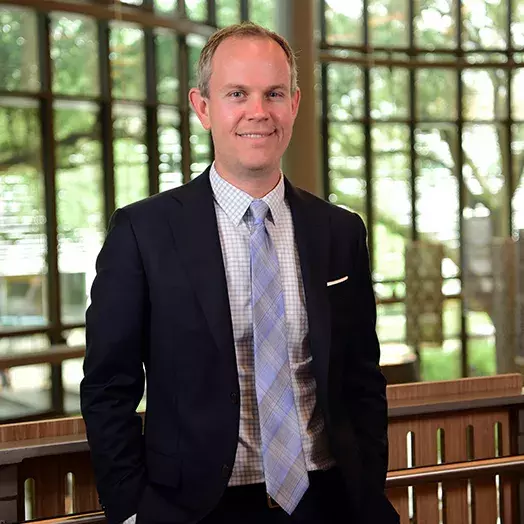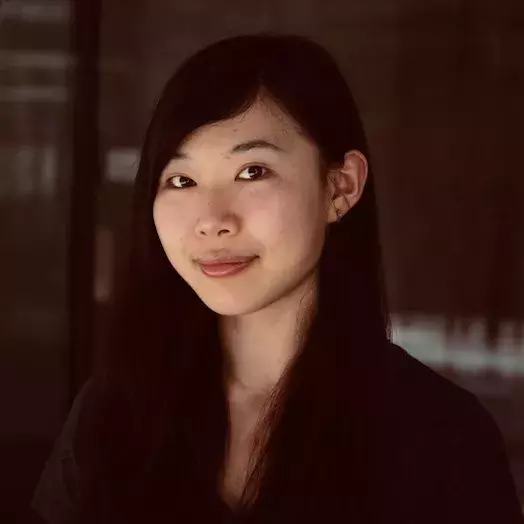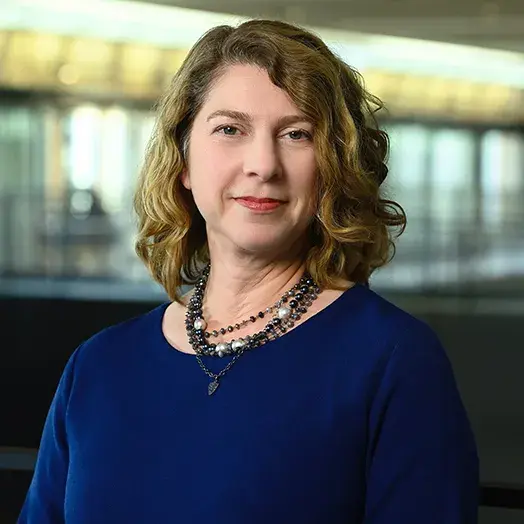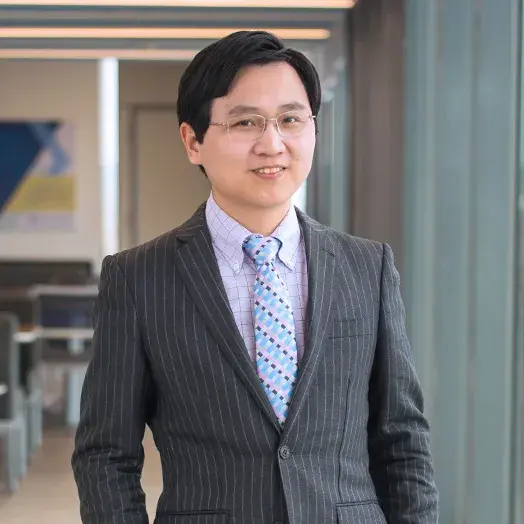Assistant professor in research track joins Carey faculty with background that includes academic study and 10-year tenure at Boeing.

New Faculty Member Trey Cummings Focuses on the Dynamics of Innovation
Article Highlights
- Assistant Professor Trey Cummings Barton is one of seven new faculty members at Carey.
- He studies the ways the attributes of firms affect their innovation outcomes.
- Before earning his PhD in strategy, he worked for 10 years at the Boeing Company.
Assistant Professor Trey Cummings, one of seven new members of the Johns Hopkins Carey Business School faculty, arrives with the impressive academic credentials customary among JHU professors.
In Cummings’s case, that means both a bachelor’s degree in chemical engineering and an MBA from the University of Arkansas, as well as a PhD in strategy from Washington University in St. Louis.
Perhaps less typical but equally impressive is Cummings’s decade at the Boeing Company, first as a financial analyst and then as a manager. That experience occurred between his MBA and the start of his Ph.D. program.
In the following Q&A, Cummings discusses his research focus on the dynamics of innovation, along with the insights he gained from his 10 years at Boeing.
Your research examines firm innovation with an eye toward understanding how firm attributes such as structure, positioning, and knowledge affect innovation outcomes by altering the motivation and ability of knowledge workers to innovate. What conclusions have you drawn from your research into this topic?
The exciting overall conclusion is that managers have many “levers” they can pull to affect innovation. The challenge is that these “levers” are complex and likely to affect and interact with other firm attributes. Take, for instance, my research on the potential impact of promotion structure on innovation. Results indicate that increasing potential rewards for promotion are likely to increase innovation outcomes. However, indications are that this increase also comes with decreased internal collaboration (due to the competition for promotion with peers) and increased reliance on external collaborators. Thus, this promotion “lever” is not a one-size-fits-all remedy to increase innovation. It is likely more effective for organizations that do not rely as heavily on internal innovative collaboration and are less sensitive to protection of their innovation from outside entities. Thus, the challenge to managing innovation is not only understanding tools that may lead to innovative improvements, in general, but pairing them with an understanding of the needs and capabilities of your organization.
You’ve also looked at how firm attributes affect top managers’ strategies for directing innovation. What have you found in that research?
We can think of a manager’s choice to innovate in two dimensions. The first dimension is the choice to invest in the process of innovation (e.g., R&D) versus in other things (e.g., marketing an existing product). The second dimension is the choice of how to invest those R&D expenditures. Firm attributes are likely to affect the incentive and ability of managers in both dimensions. For example, the long-term incentives offered to a CEO are likely to change the decision-making time horizon, leading to changes in the amount invested in innovation. Thus, CEOs governed by short-term incentives are less likely to invest in R&D than in other firm activities that generate revenue more quickly. Conversely, the technological breadth of the firm is likely to impact the potential uses of more basic research within the firm and, thus, likely to affect the type (basic versus applied) of research pursued by the CEO.
A key takeaway from that lengthy experience was to first recognize the complexity of firms. A second key takeaway was that firms, and especially individuals within firms, are not chess pieces. There is a delicate balance between firm objectives and the employees who pursue those objectives.
Trey Cummings, Assistant Professor
Before you entered the doctoral program at Washington University in St. Louis, you worked for 10 years at Boeing. Can you describe your experiences there, and how they might have provided you with insights into the ways firms operate?
I was very fortunate to have a variety of experiences at Boeing that included working as a financial analyst at multiple locations across the country, experiencing the nuances of both the defense and commercial aspects of Boeing’s business, traveling the world to visit Boeing’s suppliers, and eventually managing a group of employees. A key takeaway from that lengthy experience was to first recognize the complexity of firms. A second key takeaway was that firms, and especially individuals within firms, are not chess pieces. There is a delicate balance between firm objectives and the employees who pursue those objectives. Thus, my work experience at Boeing and my current research interests are tightly linked together. For example, my research on the impact of promotion structure on innovation at NASA is based on personally experiencing the promotion incentives for Boeing employees. More abstractly, I became curious not only about the common practices to manage complexity across firms but, more importantly, about how and why firms differ in this pursuit. This is the core of strategic management research.
What to Read Next

research
New Faculty Member Jessie Liu Works Where Economics and Marketing MeetHow have the pandemic and the resulting lockdown conditions affected your work?
On one hand, the lack of spontaneous interactions within Carey and outside Carey during academic conferences makes it more difficult to begin new research projects. On the other hand, it has provided me with time to further my current projects. Like many others, the lack of child care for a few months also shifted the time I could dedicate to teaching and research. It leaves me with an increased admiration and empathy for my students with children.
Are you teaching any classes during the 2020-21 academic year?
I am teaching Corporate Strategy in both the fall and spring.
Does being at Carey and Johns Hopkins provide you with opportunities, as a researcher and/or an instructor, that you’re particularly looking forward to?
I am excited about the interdisciplinary collaboration within Carey and across other schools at Johns Hopkins. The walls that separate departments and schools at other universities tend to keep researchers in their own lanes. However, the impactful research is more likely when cross-pollination is present. Carey and Johns Hopkins are clearly dedicated to ensuring this collaboration occurs. I am also looking forward to teaching students with varied experiences and backgrounds. This makes classroom discussion more interesting and impactful not only for the students but also the instructor.
What do you like to do for fun or relaxation when you have free time?
I love exploring! This takes on many forms in my personal time. My wife and I love trying new restaurants and traveling to new places. I also enjoy exercising in the outdoors (like on the beautiful waterfront in Baltimore) and watching documentaries to learn about new and interesting topics. Most recently, I have been able to watch my young son begin to explore, which has been quite entertaining!


